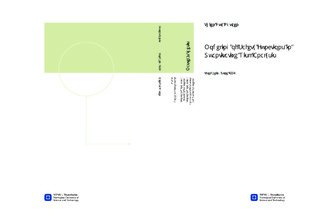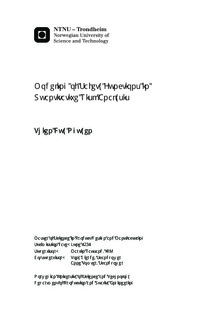| dc.description.abstract | Quantitative risk analysis in the offshore industry is mandated by the Norwegian legislation. A literature survey is carried out, related to the current legislation from the Norwegian Petroleum Safety Authority (PSA) and supporting NORSOK standards. Process accidents on offshore installations, operating on the Norwegian continental shelf are emphasized. A risk picture is the synthesis of a risk assessment, describing the risk level. Requirements to the risk picture are discussed, and associated risk measures are presented. The risk measures represent the quantitative parts of a risk picture and the measures are evaluated against risk acceptance criteria. The evaluation can be performed with a mechanistic approach, or more flexibly by using the as low as reasonably practicable principle. Uncertainty is an important aspect that many quantitative risk analyses treat too briefly. Assumptions are always made in risk analyses, and uncertainty therefore becomes an important issue. To put it on the agenda, an introduction to the topic is given. The main purpose of a risk analysis is to support decision-making and the analysts should keep that in mind when performing the analysis. The field of quantitative risk analysis has received some criticisms, but some of it is unjust. To understand why, the scope of the quantitative risk analysis must be understood. Risk can be considered both from a strategic (long-term) and an operational (day-to-day) perspective. For quantitative risk analyses, a probabilistic view is used, dealing with probabilities and expected values. Strategic decision-making fits with this approach, but renders a day-to-day basis decision-making unsuitable. In addition, quantitative risk analysis copes with several types of hazards, with a long time span. The resources needed to handle all the hazards on an operational level of detail would be tremendous. Several methods can be used when performing a quantitative risk analysis. The approach used by Scandpower is explored in detail. The main method currently used is event tree analysis. This method has some challenges. A problem addressed is the treatment of dependencies, both within and between event trees. The answer is related to how RiskSpectrum, a fault and event tree software, calculates the end event frequencies. A second problem is the treatment of human reliability, and how it can be implemented in the event tree analyses. Large investments have been used on fire protection systems, to mitigate the consequences of process accidents. The thesis endeavors to study the importance of these safety systems. The emphasis is how the systems’ reliability is modeled and treated in a quantitative risk analysis. To investigate the effects of the safety systems on the risk measures, three quantitative risk analyses are explored in detail. This was executed by using sensitivity analyses. The sensitivity analyses are performed by altering the failure probabilities to the far ends. Astonishing results arisen. An attempt has been made to understand the mechanisms leading to the results. Possible explanations are discussed, and the three most important are outlined. An input to the quantitative risk analyses is reliability data of the safety systems, but there can be nonconformity between the data. Vendor data seems to be too optimistic related to the field performance. Possible explanations are discussed in the thesis. A best practice is presented, formed as an extended conclusion. Topics considered are: - Challenges when modeling the event trees - How to include vulnerability of the safety systems - Uncertainties with the effect of deluge - Human factors - Dependencies | nb_NO |

